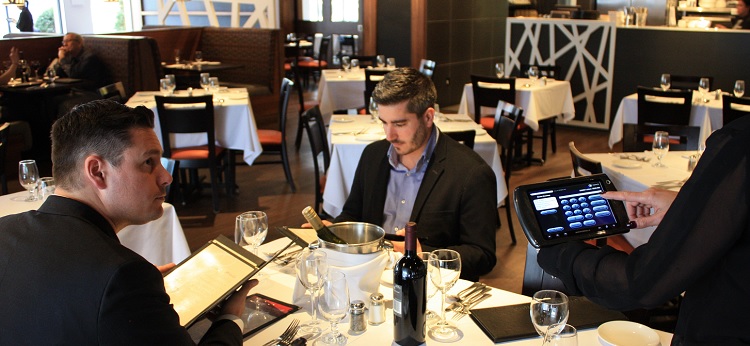A group of us went out for dinner last week-end. It got me to thinking, as I looked around, about how many areas of the restaurant could use—now don’t groan—a wee touch of tablet.
Mobile POS Keeps Servers on the Floor
The place was busy—the server told us they were running about 1/3 over the usual dinner crowd. I could see a lot of “server mobs” away from the floor. Sometimes they were on the floor taking orders. But often they were gathered around the order station. Sometimes around the expo station. So, right there is a job for the tablet. So much of that off the floor time would be eliminated, since the order would fly straight from the device right to the kitchen. The booth we were in overlooked the patio, and the problem of absent servers was magnified there—since it was farther away from (primarily) the bar. And I watched the patrons—I looked for what we call “the dreaded neck spin”— people constantly turning their heads to find a server. And necks were spinning a lot.

Speeding Up Drink Orders
The bar was busy. Two bartenders, but they struggled to keep up. I tracked the total time it took for the server to take and serve our drinks. Something in the 7 minute area. It’s the breakdown of that seven minutes that’s interesting. The server stopped at another table after taking our order. By the time he got to bar, about 3 1/2 minutes had passed. He ordered the drinks. By the time the bartender made them another 3 minutes had passed. It’s mobile POS to the rescue here too: if the drinks order had been sent to the bar from the table, they would have been ready (or at least top-of-queue) when the server came for them.
Making Good Service Easier
There were some little things too that caught my eye. At one point a foursome sat in a booth; water was poured and bread brought. When the server came to take their order they wanted to switch tables (it was right under an air vent). The server brought them to another table. That was good: she didn’t have to find the hostess in order to serve the customer. She alerted the bussers to reset the old table. But then she had to head back to the host station and alert the hostess of the change. With a tablet, she could have accessed the table chart and made the change, without ever leaving the floor.
Increased Productivity
I was thinking about some other things too—things that involved the back office. Inventory for instance: how much easier it would be with a tablet instead of a piece of paper or lugging around and setting up a laptop. Three times during our meal I saw the floor manager kind of hovering over the hostess’ shoulder looking at something on her computer (maybe the seating chart). That, too, could have been avoided if the manager was mobile, accessing real time data.
Generating More Revenue
One final thing struck me. After we placed our dinner order, one of us decided she wanted an appetizer. But the server had left the floor to enter orders. By the time he returned, we had all eaten some bread and the person who had wanted the appetizer wasn’t in the mood for it anymore. That’s a lost sale totally attributed to the server leaving the floor. All in all it was a fine dinner for us. But it could have been better for the restaurant.
Related stories: Mobile POS Case study: ROI on mobile POS solution in less than six months for Giorgio Ristorante


